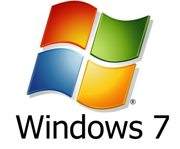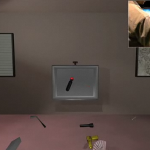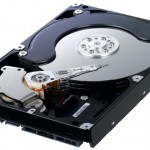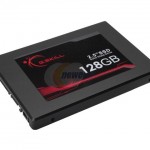Another pretty quiet week. Well, not so quiet with the E3 going on, but the major stories out of that were gaming which I will cover later on in this WNR. I did manage to write a mid-week blog this week, so no Fallout 3 jokes this time. The blog was about solid state drives and about how awesome I think they are. It’s well worth a read because you will be using one sooner rather than later. If they do manage to replace HDDs, then that’s the second last major mechanical device out of your average PC. What’s the last mechanical device? That’s your optical drive, of course. No wonder Sony says that Blu-ray may be the last optical format around, not so much because it’s so good that you won’t need another one, but rather because once HDDs are gone, the optical drive is going to seem quite quaint as the last mechanical device sitting in your PC (fans and switches excepted, although with cooler components and alternative cooling methods, fans are on their way out as well).

Starting with the copyright news, there isn’t much going on actually. I don’t know if this is good news or not. The MPAA is pretty busy these days with their (and their affiliates’) lawsuits all around the world, so I guess it’s understandable that they don’t have as much time to come out with the usual propaganda.
In the RealDVD case, the MPAA has made a claim that will not surprise anyone, but does give insight into what they perceive to be fair use. They have made the case to the judge that even making one backup copy of a legally purchase DVD for personal use is illegal, as it circumvents the DMCA. There are fair use provisions in the DMCA in relation to archiving, but the MPAA lawyers claim that’s for actual archives (like the National Archive) and does not apply to mere mortals. They even got the Copyright Alliance to claim that if they wanted to give people their rights back, they would have charged more per DVD, and not the current amount, which is too low to allow them to be able to make backups and stuff. Basically they’ve admitted that DRM is used to provide price control on digital content that’s normally (in its DRM-free form) hard to control. So it’s not about piracy at all, and never has been.

Windows 7's codec support may bring more anti-trust lawsuits
While it’s not a copyright issue, but it is still a legal one and that’s the slightly controversial approach that Microsoft has taken with audio/video codec support in the new Windows 7 operating system, which will be released in October. What they have done is locked Windows Media Player so that it won’t work with third party codecs. And the Microsoft codecs will override your third party ones unless unlocked or using a player that will ignore the way Microsoft has done things like Media Player Classic. It’s good news for end users I suppose, in that Microsoft is providing a bunch of codecs with the default OS installation so that you don’t need to go codec hunting just to play a XviD file. What’s not so good is for codec publishers that will lose customers, despite offering a superior product to the one that comes with Windows. Sound familiar? Didn’t Microsoft try to do this when they integrated Internet Explorer into Windows, and had to pay out huge amounts in anti-trust cases brought against them. Microsoft argued then that it was good for their customers, but offering something that come as standard is one thing, but preventing competitors from offering alternatives is another. We’ll have to wait until the release version to see if installing and using third party codecs has been made intentionally hard, or it’s just something that can be bypassed easily.

In HD news, it’s all pretty quiet on the Blu-ray front. Most HD news these days is about yet another HD streaming service, or another hardware platform that now streams an existing service.
One of Microsoft’s big E3 announcements (you’ll read more about them in the gaming section), is that 1080p HD video streaming is coming to the Xbox 360. Bandwidth issues mean that none of the 1080p streaming services will come close to matching Blu-ray’s quality, and you can’t argue with the convenience of not having to step outside you home to watch a movie from a catalogue of thousands, more than what your typical store will hold. The best news is that, unlike previous offerings, this one is worldwide. And not only that, the services that Xboxers in the lucky countries have been enjoying will now come to 10 more countries, including Australia. Last week it was the news about UK and Irish Xboxers getting Sky TV channels through the Xbox 360. So one of Microsoft’s major themes for this E3 has been trying to turn the Xbox 360 into a fully fledged media streamer. And unlike Sony, they don’t have to worry about streaming taking customers away from their disc format, because they don’t have a disc format to support (anymore).
![]()
And so onto gaming, and most of the news this week has been the various announcements from the gaming companies. Nintendo was relatively quiet this E3, and it’s all been about Sony and Microsoft catching up.
And the best way to do that of course would be to copy Nintendo’s lead and offer motion controlled gaming. But both have decided to go in a slightly different direction to what Nintendo is offering.
Microsoft was up first, and they demonstrated their Project Natal, a full body motion gaming system without the need for a controller (click on link to see video of Project Natal, as well as Milo). Well, you can’t accuse them for coming out with a Wii clone, that’s for sure. If the thing works, then it will open up a whole new level of gaming, because gamers don’t want an abstract representation of real world activities, as the gamepad provides. Even the Wii-mote is limited in providing a representation of real world activities, as it only works for one arm (and even with the Wii Fit board, it’s still limited – to go that one step further, then we’ll have to end up looking like the Borg just play Mario). So a motion and depth sensing camera seems to be the way to go, and Microsoft has also added facial and voice recognition. The criticism of Natal is that without an actual controller with buttons, then the whole system may not work with proper games that require the gamer to do super-human things that only controllers and buttons can simulate. But what’s to say that Natal won’t have controller add-ons in the future? Another problem is accuracy, and I don’t know if the camera can pick up and interpret all the nuances that would be required to have a full gaming experience. But certainly this seems to be the next logical development in gaming, and it was what I thought the Wii-2 would be like. Microsoft also showed a demo featuring a virtual boy called Milo (see video from link above), which combined showed the future potential of Natal by allowing you to interact with your game console/virtual friend in unbelievable ways.
Sony went with the more traditional approach, but added some innovation as well (click on link to see video). A controller wand very much like the Wii is present, but there is a big glowing light that, when combined with the PlayStation Eye, will allow depth to be tracked (based on how “big” the glowing balls are, as seen from the PS Eye) and will also improve accuracy. It’s basically motion capture technology used in 3D effects. And compared to the Wii, it basically means 3D motion controller that’s ultra accurate – and as many have said, basically what the Wii would look like if it was perfect. So it’s not as revolutionary as Natal, but it will be available for public consumption earlier by all estimates, and it is more “gaming”, compared to Microsoft’s more “virtual” approach. And there’s no reason why Sony can’t add some of Natal’s features through the use of the PlayStation Eye (some of which are already present). And yes, it looks like a dildo, but so what? And of course, no price cut for the PS3.
So two companies and two different approaches. Which one will come out on top? Hard to say at the moment. If Natal works, then that’s the type of gaming I see myself playing in 5 years time. If the PlayStation Motion Controller works, then that’s the one I see myself playing next year instead of the Wii. And in the end, it’s all about the games that will support either system, and that will determine who wins. And don’t forget Nintendo, the masters of this type of thing, has yet to come out with the full response to these two interesting challenges.
On that positive note, here ends this week’s WNR. See you next week.





